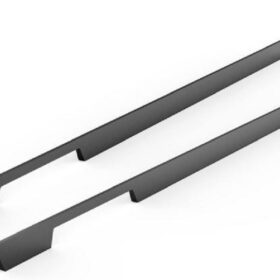Exploring Aluminum Frame Sections- A Comprehensive Guide
Discover the intricate world of aluminum frame sections with “Exploring Aluminum Frame Sections: A Comprehensive Guide.” This meticulously crafted resource delves into every aspect of understanding, selecting, and utilizing aluminum frame sections. Whether you’re an engineer, architect, or enthusiast, this guide will equip you with invaluable knowledge.
Understanding Aluminum Frame Sections
Aluminum frame sections are extruded profiles of aluminum alloy, offering a high strength-to-weight ratio, corrosion resistance, and versatility in applications. They are categorized by their shape, such as I-beams, T-sections, and channels. Each shape provides unique properties tailored to specific load-bearing requirements and design aesthetics.
Material Properties and Standards
The choice of aluminum alloy for frame sections depends on the required strength, corrosion resistance, and weldability. Common alloys include 6061, 6063, and 7005. International standards, such as ASTM and ISO, define the alloy compositions, mechanical properties, and tolerances of aluminum frame sections, ensuring consistency and reliability.
Structural Design Considerations
When designing with aluminum frame sections, engineers must consider load-bearing capacity, deflection, and stability. Structural analysis software and finite element modeling techniques are employed to optimize section selection and ensure structural integrity. The guide covers the principles of structural design, including moment and shear forces, bending stress, and deflection analysis.
Connection Methods
Aluminum frame sections can be joined using various methods, such as welding, bolting, and riveting. Welding techniques, such as MIG and TIG welding, require precise control to maintain strength and integrity. Bolted connections offer flexibility and ease of assembly, while rivets provide a permanent and tamper-proof connection.
Fabrication and Applications
Aluminum frame sections are manufactured through the extrusion process, which involves forcing molten aluminum through a die to create the desired shape. Precision machining and fabrication techniques are used to create customized sections and components. The guide explores the manufacturing and fabrication processes, as well as their applications in industries such as construction, transportation, and aerospace.
Sustainability and Future Trends
Aluminum frame sections are an environmentally friendly choice due to their recyclability and durability. The guide discusses the sustainability implications of aluminum production and frame manufacturing, as well as emerging trends in material science and design optimization.
-
2024-11-29Top Trends in Modern Kitchen Cabinet Pulls for 2024
-
2024-11-28The Ultimate Guide to Modern Kitchen Cabinet Pulls- Materials, Styles, and Tips
-
2024-11-27Elevate Your Kitchen Design with These Must-Have Modern Cabinet Pulls
-
2024-11-26Sleek and Stylish- The Best Modern Kitchen Cabinet Pulls for a Contemporary Look










